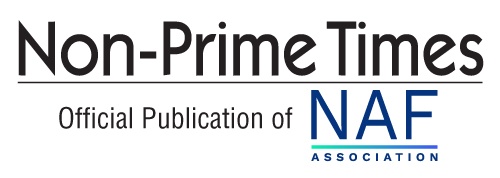Over the last several years, it has become increasingly difficult for auto dealers and subprime lenders to ensure financial inclusivity and fairness for car shoppers today. This is not so much due to blatant discrimination, but more because so many people inadvertently overstate or understate their income on their applications. This problem is frequently encountered with hard to document income sources like freelance work and multiple jobs, or as a result of the applicant/lender simply not understanding how to calculate income from gig economy jobs.
How pervasive is this situation today? Consider that 37 percent of respondents in a January 2023 poll of ~1,000 workers from the job site Monster reported having more than one full-time job¹. What’s more, freelancers make up 36 percent of the workforce in the U.S. today². According to Upwork’s 2021 Freelance Forward Economist Report, freelancers comprise more than one-third of the U.S. labor market, with 59 million freelancers nationwide.
If that’s not enough to cause confusion over what to include in a car loan application, also consider that the gig economy has made it easier to take a business overseas. According to MBO Partners, in 2018, 19 percent of full-time independent workers in the U.S. had clients in other countries, and 16 percent of Americans say they’ve used a gig website or app to make money.
Growing Complexities in Calculating Income
The struggle lies in the fact that there are now major complexities such as variable earnings, duplicate documents, multiple employers, and W-2 wage earners with other forms of fixed income requiring gross-ups. And, because there is often high turnover at lenders, new staffers unknowingly make errors and introduce bias as they manually review line items. Sometimes they count forms of overtime, shift differentials, and per diem pay, while in other cases, they don’t. This results in disparate treatment and subjects the lender to additional liability of fair lending violations.
A lender and major U.S. financial institution that we serve actually “tested” this theory and provided the same income documents and funding guidelines to 10 different employees ranging in seniority from executives and funders to underwriters. Shockingly, no two people arrived at the exact same calculation.
To further complicate matters, consumer-permissioned sources often generate new barriers for low-income earners since many lenders underwrite based on net income rather than gross income. Every American has a different tax situation leading to unpredictable withholdings, tax deductions, garnishments, 401k contributions, etc.
By underwriting based on net income, a lender can actually reduce the borrower’s payment-to-income ratio, forcing them into a higher interest rate. For low-income borrowers these services also introduce friction, require remembering account username and password, and don’t offer full support. They also don’t count important variable pay types including: per diem, shift differentials, overtime, per mile, etc.
Traditional Formulas and Tools Reduce the Chance of a Fair Loan
Many of today’s auto lenders use complex formulas to calculate applicant incomes that can change throughout the year and can’t be easily explained. This often leaves many car shoppers, and the dealers serving them, confused about calculating or overstating income, which could result in an unwanted repossession down the road. And, the lender misses an opportunity to capture more loans without additional credit risk.
Dealers and lenders are increasingly turning to new AI tools to help bring more fairness to the process. Many of today’s leading OCR solutions read data off paystubs, but they’re only pulling text from the documents. They also rely on changes in the metadata to “detect fraud.”
OCR tools read data off of documents, but they aren’t an end-to-end solution helping lenders comply with ECOA and Fair Lending. Their mission isn’t to lower the cost of credit using AI for financial inclusivity, real-time transparency, and improved compliance and market share. To accomplish this, an organization must enable higher function decisioning and unlock data to ensure credit policies are unbiased and effective.
The leading OCR tools also focus on mortgage – super prime borrowers who don’t have income challenges. However, the use of these tools can open up new challenges such as a higher synthetic fraud rate and charge offs within 18-24 months from booking.
Next-Gen AI & Machine Learning Solutions are Revitalizing Fair Lending Opportunities
Today’s AI-powered fair lending solutions provide a reliable platform for multiple use cases and support lenders across the full spectrum of lending. Partners with these advanced solutions work tirelessly to evolve them, with a dedicated and consistent focus on fair treatment for those applying for credit.
More dealers and lenders must leverage these new solutions to better analyze different income scenarios so applicants across the U.S. can have their incomes instantly and accurately calculated. This is especially important within communities of underrepresented minorities across varying income brackets. Fair income calculation regardless of employment situation and income variables common with today’s American should be a given.
Income and wage earner complexities have opened up a new set of challenges for lenders who want to do right by their customers. So, more lenders are teaming up with innovative fintech partners to implement AI and machine learning solutions that provide a unique approach to aggregating the best applicant income sources. By leveraging partnerships with consumer-permissioned data sources and keeping a watchful eye on fraud threats, trusted third-party assessors can perform disparate impact analysis on an ongoing basis.
With these tools now available, lenders and their dealers can focus on keeping an eye toward servicing their customers with the confidence that everyone will have a fair opportunity to purchase a car in the most affordable way possible.
¹ https://fortune.com/2023/02/13/overemployed-workers-juggling-full-time-jobs/
² https://millennialmoney.com/gig-economy-statistics/



